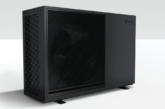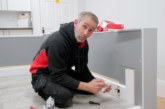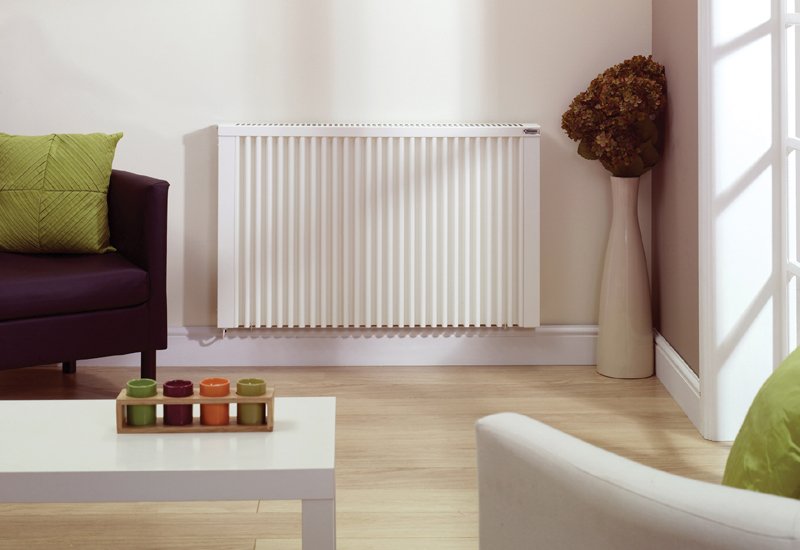
PHPD speaks to Richard Brown, Managing Director of Electrorad to find out what he believes housebuilders may be missing out on if they fail to consider electric heating on new developments.
Q: Why should a housebuilder consider electric heating for his latest development?
Ease of installation (no pipework and can be installed at second fix) flexibility of radiator siting, much better control of energy use and comfort as each radiator operates independently of each other. No pipework required means a neater finish. They require no maintenance – ever. For landlords there will be no yearly inspections or the danger of carbon monoxide. Electric radiators are future proof as they do not require carbon fuels and can integrate with all renewable energy and micro-generation systems, the most common being solar PV panels. It is the only heating system that can be carbon zero when combined with renewable energy supplies. Electric heating has a long life expectancy and may be offered with extensive guarantees. Electrorad offer guarantees in excess of 10 years and up to 30 years. This gives peace of mind throughout the 10 year new home guarantee period.
Q: Are there any time or space savings associated with the selection of an electric heating system?
Yes, firstly only an electrician is required for the install unlike a boiler based heating system where a plumber and an electrician are required. The radiators can be installed at second fix. No pipework is needed and no boiler is needed so the space the boiler and the pipework would normally take is saved. The installation is much quicker than installing a boiler based system and radiators can very easily be added to the system if desired later.
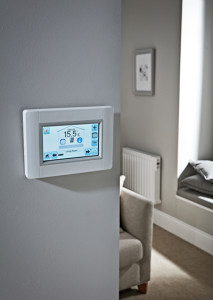 Q: What levels of energy efficiency do electric radiators offer?
Q: What levels of energy efficiency do electric radiators offer?
Electric radiators are 100% efficient at converting fuel (electricity) in to heat, so there are no losses to pay for whatsoever. They also offer excellent control of energy as each radiator can be controlled independently. They are not reliant on receiving hot water from a central boiler, each radiator is a sealed system and can be controlled to only produce heat to the level required and at the time required for its own room. The heat is produced instantly and warms the room very quickly.
Q: Purchasers of new homes are increasingly demanding more control over their heating system. What are the control options that can be used with Electric Radiators?
There is a wide range of control options available from different radiator ranges and different manufacturers. The starting point is a simple analogue thermostat which is a dial control on the radiator to control the room temperature. The next step is to also have a timing control which will turn the power on or off to the radiator at the times programmed. The more advanced models have digital electronic thermostats and 24 hour 7 day programming systems which allow the user to pre-set what temperatures are wanted and at what times. Several different temperature changes can be programmed each day. The very latest controls are digital electronic thermostats with accuracy of +/- 0.1°C. They also can have built in radio frequency receivers for whole house control from a central point and increasingly are now offering control via WiFi which means the ability to control every radiator seperately from anywhere in the world via a smartphone, tablet or PC. A good example of this is the new Touchscreen Wifi control and Clevertouch app from Electrorad.
Q: Radiators have a very familiar look which homeowners appreciate. How important is it that electric radiators mimic the aesthetics of hot water radiators.
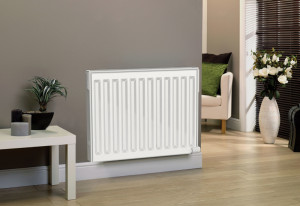 Most homeowners find it very important that electric radiators look like and produce the same quality of heating as boiler based central heating radiators. A commonly held view is that electric heating is ugly and bulky which is a hangover from the older panel heaters and storage heaters. Today’s electric radiators are a completely different proposition. There are electric radiators on the market such as Digi-Line by Electrorad which look identical to regular central heating radiators and offer the exact same quality of heat but with much better controllability.
Most homeowners find it very important that electric radiators look like and produce the same quality of heating as boiler based central heating radiators. A commonly held view is that electric heating is ugly and bulky which is a hangover from the older panel heaters and storage heaters. Today’s electric radiators are a completely different proposition. There are electric radiators on the market such as Digi-Line by Electrorad which look identical to regular central heating radiators and offer the exact same quality of heat but with much better controllability.
Q: Gas is the main fuel used to generate heat in new homes. Do you think electric can grow to a position to challenge its dominance?
Yes I do think so. The government Department of Energy & Climate Change (DECC) has made it clear that it considers electric heating to be the future for our domestic heating requirements. In order to move to lower and zero carbon homes, our central heating systems need to move away from using fossil fuels. The only way to do this is by using electric heating with the electric coming from renewable, zero carbon, sustainable sources. i.e. Solar, wind, nuclear, tidal etc. Advancements in battery storage technology e.g. the Tesla Powerwall, will enable homes to be completely self-sufficient by storing electricity created by solar panels and then used to power the electric heating.
There is currently an imbalance that needs adressing for electric heating to grow substantially and that is how government standards currently treat electric heating as having high carbon emissions. This is due to our power stations mostly using fossil fuels and being inefficient at converting those fuels to electricity. On the other side of the coin, electric cars attract government grants and are considered to have zero carbon emissions, but the electricity they are being charged by is the same electricity that is powering electric heating.
Electricity will become a universal and versatile source of low carbon energy. Technologies that use electricity to generate heat, including electrical resistive heating, are well placed to become major low carbon heating technologies.

